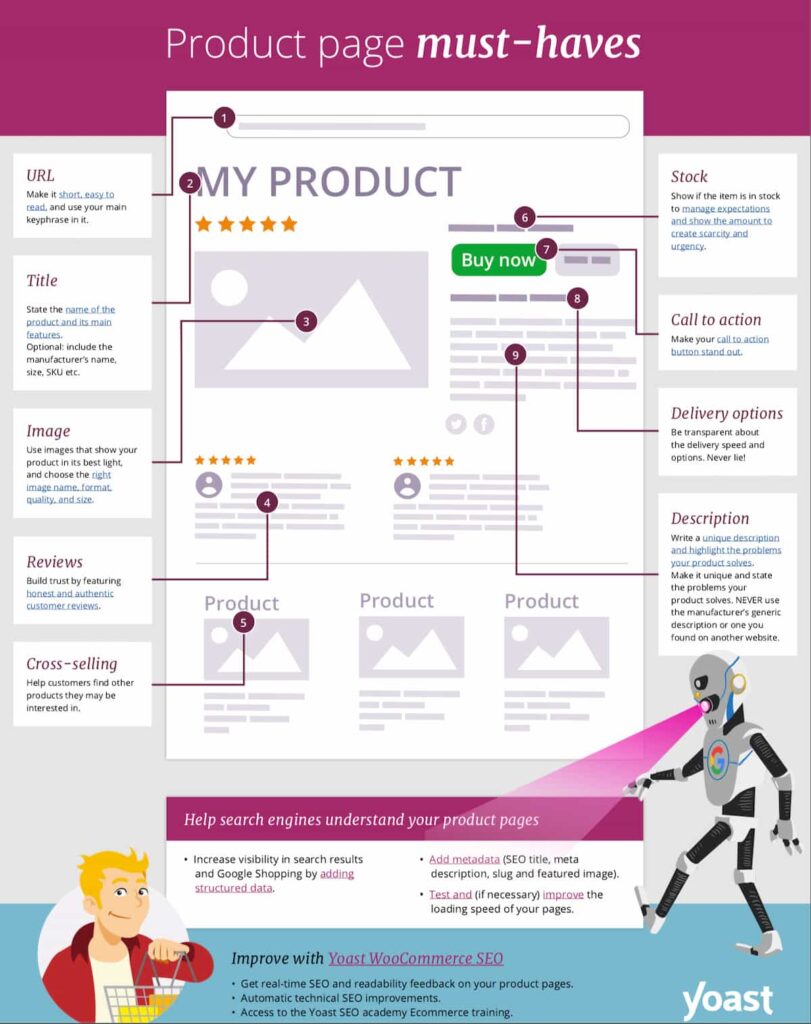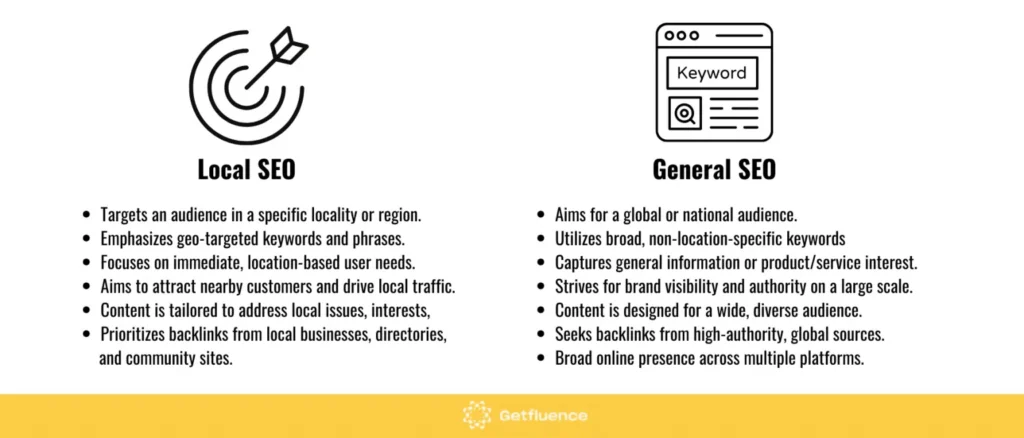Running an online store is exciting, but if customers can’t find you in search results, even the best products won’t sell themselves. That’s why optimizing your ecommerce site for search engines is essential.
Besides helping you to rank higher on Google, search engine optimization (SEO) allows you to attract the right traffic, improve user experience, and increase revenue.
SEO is a powerful ally that can help your store stand out in a crowded digital market. From attracting high-intent shoppers to building brand credibility, a strong SEO strategy ensures that your business thrives for the long haul. Whether you’re a new e-tailer or an established brand looking to scale, understanding the benefits of ecommerce SEO is essential.
In this article, we’ll examine the top benefits of ecommerce SEO to demonstrate why you’ll want to start optimizing your online store for search engines as soon as possible if you aren’t already doing so!
- 1. Increased Organic Traffic (More Visibility in Search Engines)
- 2. Higher Conversion Rates and More Sales
- 3. Cost-Effective Marketing Strategy
- 4. Enhanced User Experience (UX) and Site Performance
- 5. Better Brand Credibility and Trust
- 6. Local SEO Perks for Ecommerce Stores
- 7. Better Insights Through SEO Analytics
1. Increased Organic Traffic (More Visibility in Search Engines)
No matter what you sell on your ecommerce site, there’s a good chance that you’ll have at least a few competitors offering similar (if not identical) items for sale. When consumers search for your products or other keywords related to your niche on Google or other search engines, where your online store falls in the rankings will have an impact on how likely these potential customers are to click on your pages rather than those of competing stores.
If you consider that 75% of users don’t go beyond the first page of search results, according to Search Engine Land in reference to a HubSpot study, it’s clear that doing what you can to reach the top spots in search engines is crucial for boosting your visibility.
With a carefully crafted SEO strategy in place thanks to tips from a comprehensive ecommerce SEO guide, you can help your online store appear higher up in the search results. This in turn will lead to increased organic traffic to your site, meaning more potential customers checking out what you have to offer!
2. Higher Conversion Rates and More Sales
Performing thorough keyword research and targeting high-intent search queries, those indicating that users are ready to take action, e.g., making a purchase, comparing products, or finding a nearby store, makes it possible for you to drive highly relevant traffic, improve conversion rates, and maximize return on investment (ROI) by capturing customers who are ready to buy.
When determining what keywords to target in different kinds of content for your online store, it’s important to think about search intent SEO and how various types of search intent, the purpose of a user typing a certain query into a search engine, differ. For example, while transactional intent queries indicate a user is ready to take action, such as making a purchase (e.g., “buy running shoes online”), informational intent queries reflect a search for knowledge or answers (e.g., “best running shoes for beginners”).
Although you’ll want to consider different sorts of intent in ecommerce SEO, optimizing certain kinds of content, such as product pages, for transactional intent is essential, as these searches come from users ready to buy, increasing the likelihood of boosting your conversion rate and sales.
A well-optimized product page isn’t just about ranking higher in search results—it’s also about providing a seamless experience that guides potential buyers toward making a purchase. Elements like compelling product descriptions, high-quality images, structured data, and clear calls to action all play a role in turning visitors into customers.
To illustrate what goes into an effective product page, take a look at this handy infographic from Yoast, which breaks down essential elements to include to boost product page SEO.

Source: Yoast
By implementing these best practices, you can ensure that your product pages not only attract traffic but also convert visitors into paying customers!
3. Cost-Effective Marketing Strategy
For many online sellers, sticking to a strict budget when it comes to product promotion is of the utmost importance. Furthermore, if you’re just starting out in ecommerce, it’s quite possible that the amount of money you have to spend on marketing may be rather limited.
Note that by skillfully implementing SEO, you can spread the word about your business with little financial investment required!
In contrast to paid advertising methods, such as pay-per-click ads, SEO is a more sustainable, long-term strategy. In fact, Terakeet reports that, on average, SEO can lower customer acquisition costs by approximately 87% compared to digital advertising.
PPC can become expensive with time because advertisers must continuously pay for clicks, and costs can rise due to competition. Once the budget runs out, traffic stops. SEO, however, builds long-term visibility, driving consistent traffic without ongoing ad spend, making it a more cost-effective marketing strategy over the long term.
4. Enhanced User Experience (UX) and Site Performance
Well-done SEO doesn’t just make Google happy—it also creates a more enjoyable experience for the people visiting your website.
SEO improvements like faster loading speed, mobile-friendliness, and structured navigation enhance user experience by ensuring quick access to content, seamless browsing on all devices, and intuitive site structure. These factors reduce bounce rates, increase engagement, and make information easily accessible, ultimately leading to higher satisfaction and improved website performance.
A key part of optimizing user experience is meeting Google’s Core Web Vitals—essential performance metrics that influence how users interact with your site.
Google evaluates factors like loading speed, interactivity, and visual stability to determine whether a page delivers a smooth and frustration-free experience. Websites that perform well in these areas tend to rank higher in search results and see lower bounce rates, as users are more likely to stay engaged rather than abandon slow or unstable pages.
It’s therefore a good idea to seek out SEO developers dedicated to optimizing site speed and performance if you feel like you might need some assistance in this area for your online store.
5. Better Brand Credibility and Trust
As a new e-tailer, it can take a little while to convince shoppers of your trustworthiness. With so many ecommerce brands on the market, it’s important to help your online store stand out from the crowd.
Fortunately, another one of the many benefits of ecommerce SEO is that higher search rankings enhance your authority and trustworthiness by signaling to users that your site is a credible and relevant source. Top-ranking websites benefit from increased visibility, perceived expertise, and consumer confidence, as users often associate higher positions in search results with reliability, quality, and industry leadership.
Google prioritizes trustworthy and authoritative content in search rankings, which is why E-E-A-T (Experience, Expertise, Authoritativeness, and Trustworthiness) plays a crucial role in ecommerce SEO. By demonstrating real expertise in your industry, offering high-quality content, and building trust through reviews and secure transactions, you can strengthen your brand’s credibility while improving search visibility and conversion rates.
6. Local SEO Perks for Ecommerce Stores
While some businesses only involve online transactions, others also have brick-and-mortar stores where shoppers can purchase their products in person. If your ecommerce store has a physical location, you’ll find that local SEO can help drive in-store traffic.
Although both local SEO and general SEO strive to enhance your site’s visibility in search results, they operate with different strategies. In the Getfluence visual below, you can see how the two compare.

Source: Getfluence
Keep in mind that it’s definitely worth putting effort into local SEO even if you have a general SEO strategy in place when your store has both online and physical locations. Consider that, according to Think with Google, 76% of consumers who perform a local search on their smartphone visit a business within a day.
When you optimize your Google Business Profile listing, obtain a decent number of positive reviews, and provide consistent NAP (Name, Address, Phone Number) details, your business will be more likely to appear in local searches, increasing foot traffic and attracting nearby customers searching on mobile devices.
7. Better Insights Through SEO Analytics
The thing about SEO is that it’s not just a one-and-done task… Your plan for optimizing your online store for search engines will be an ongoing process that requires continuous monitoring, updates, and optimizations to keep up with algorithm changes, evolving user behavior, and competitive market trends.
Taking the time to develop a strong SEO strategy ensures that you start off on the right foot, boosting your chances of success. Plus, with the assistance of SEO analytics, the process of collecting, measuring, and analyzing website data, you can gain valuable insights to help you make informed, data-driven decisions that will improve your site’s performance.
With this activity, you can start to track keyword rankings in Google Analytics or Google Search Console, for instance. These tools also allow you to examine organic traffic, user behavior, and search visibility, bounce rate, and other metrics, offering insights into how customers find and interact with your website.
In addition, SEO platforms like Ahrefs and Semrush provide deeper analysis concerning keyword rankings, backlink profiles, and competitive research to further help refine your strategy. With this essential data in hand, you can then get to work on optimizing product pages, improving your site structure, and enhancing user experience—leading to increased traffic, higher engagement, and ultimately, more sales!






0 Comments